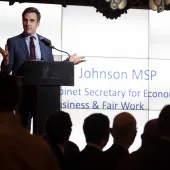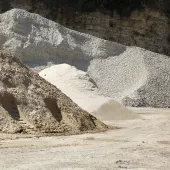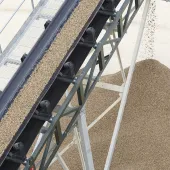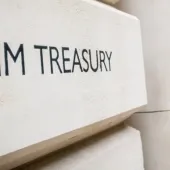Economic aggregates – creativity and the levy
With a rise in the aggregates levy only around a month away, Quarry Products Association (QPA) economics director Jerry McLaughlin takes a look at the justification for the hike and finds a complex tale in which the government ultimately lumbers everyday tax payers with the bill through construction projects.
We are all now familiar with the operation of the aggregates levy in the aggregates sector – it’s a fact of life the industry deals with. But with the upcoming April increase in the rate of the aggregates levy from £1.60 a tonne to £1.95 a tonne it’s an appropriate time to ask some questions about it. Such as what was the levy intended to achieve, and has it worked?
The origins of the levy go back to 1997 when the government was looking for new environmental taxes and aggregates were put in the frame. In the period up to the decision being taken in the 2000 Budget to introduce an aggregates levy there was a huge lobbying effort against the levy, which was ultimately unsuccessful.
The reasons for this are complex and not a can of worms I care to open now. It is worth recalling, however, that the methodology government used for calculating the levy rate was one of the more bizarre examples of government policy development.
Government hired consultants to use a market research technique called contingent valuation (CV) to calculate the environmental costs of quarrying.
CV was devised to test the willingness of consumers to pay more for enhanced products – for example, would you be willing to pay x pence more for a longer chocolate bar with more nuts?
Using CV, some residents living within five miles of a small sample of quarries, wharves and recycling units were asked to say how much additional tax they would be prepared to pay to close the local quarry down – of course it was made clear that they would never actually be asked to pay more tax!
Similarly a national sample was asked how much they would be willing to pay to close down quarries in National Parks.
In spite of biased questions which encouraged people to say they were willing to pay, very few people in the survey samples actually indicated a willingness to pay – largely because most did not regard industry operations as a big environmental issue.
However, when the consultants took the low figures from the surveys and applied them to the national population, they calculated an environmental cost of £1.30 per tonne.
Government then increased this figure by nearly 40% to give a cost of £1.80 per tonne, while later arguing it was doing industry a favour by introducing a tax rate of only £1.60. You couldn’t make it up!
So has the levy produced environmental benefits? According to successive Budgets, the levy has generated “reductions in noise, vibrations…..loss of amenity and damage to wildlife habitats”. But has it?
In reality government has no empirical evidence that any such benefits have occurred. In fact no attempt has ever been made to measure such potential changes.
Interestingly enough, the process of calculating the aggregates levy in the first place assumed that site restoration and aftercare generated zero environmental or social benefits!
So has the levy generated less quarrying and more recycling? Logically, increasing the cost of primary aggregates by £1.60 a tonne must have had some impact on demand and supply, even if the market as a whole is not too price sensitive – or elastic.
Pre-levy, the supply of recycled materials doubled in GB in the decade to 2001, and has continued to rise since. There is no reason to think that the pre-levy trend of increase in recycling supply would not have continued if the levy had not been introduced, so the conclusion would be that the levy has led to a small additional increase of supply of up to 1million tonnes of recycled materials a year.
The levy has imposed a direct additional annual cost on the construction sector of around £350million in order to generate an increase in the aggregates market share of recycled materials of around 0.35% a year – 1million tonnes a year compared with a total GB market of around 280million tonnes a year.
Optimising the use of recycled materials is entirely rational, and Great Britain is pretty good at it – our recycling market share of 25% is three times higher than the European average. But the evidence suggests that the impact of the aggregates levy has been marginal.
So, looking forward how is the levy increase to £1.95 a tonne from April justified?
Government says that it just reflects index linking. This is in practice a retrospective index linking increase of 22% from 2002 to 2008, and no doubt the additional £75million a year of levy revenue will come in handy!
The reality is that the levy will continue to generate increasing revenue from the aggregates sector and customers – which includes government. It pays 40% of the levy revenue to itself.
Ironically, the Secretary of State for Transport is reviewing the roads programme because of costs concerns and the Treasury is about to increase her scheme costs by a few million more with a levy hike!
The ultimate irony is that while this nominally environmental tax increases, the environmental management of industry operations will continue to improve and the restoration of sites will continue to boost ecology, biodiversity and habitats.
So perhaps the decision to increase the aggregates levy reflects a new principle of environmental taxation – “as environmental performance improves so does environmental taxation”. Perverse or what?









